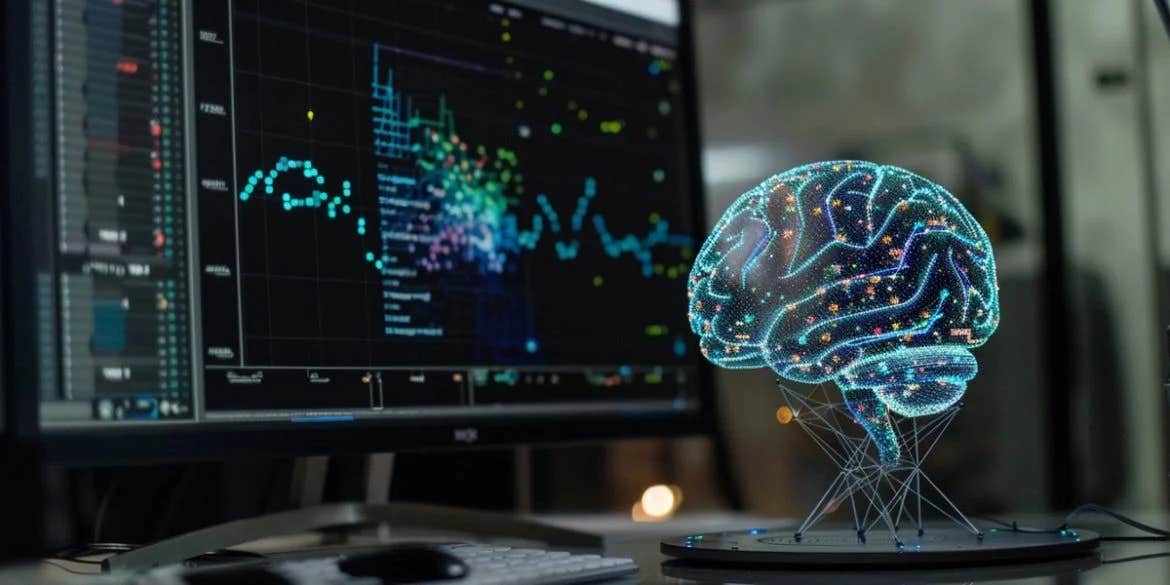AI breakthrough revolutionizes noninvasive brain pressure monitoring
Mount Sinai’s AI model offers a safer, faster alternative for monitoring brain pressure, reducing risks and improving critical care outcomes.

AI-powered tool monitors brain pressure noninvasively, transforming how doctors manage critical care patients. (CREDIT: CC BY-SA 4.0)
Intracranial hypertension—elevated pressure within the skull—poses life-threatening risks, including strokes, hemorrhages, and brain herniation. For years, the gold standard to monitor this condition has involved invasive procedures, such as drilling into the skull to insert pressure-sensitive probes.
While effective, these methods carry significant risks, including infections and hemorrhages, limiting their widespread use. Now, researchers at Mount Sinai have developed a groundbreaking artificial intelligence (AI)-driven technique that could transform how doctors monitor intracranial pressure, offering a safer and faster alternative.
The Current Challenge of Monitoring Brain Pressure
Traditional methods of intracranial pressure (ICP) monitoring, though precise, require invasive tools like lumbar catheters or intracranial probes. These procedures, while lifesaving, are not without drawbacks. The risk of infection, bleeding, and the need for surgical expertise restrict their use to the most critical cases.
Noninvasive methods, such as transcranial Doppler (TCD) and optic nerve sheath diameter (ONSD) measurements, have emerged as alternatives. However, these techniques depend on specialized skills and equipment, often available only in advanced medical centers. Additionally, their accuracy varies, and they typically require clinical suspicion to initiate testing, potentially missing subclinical cases.
A New AI-Powered Solution
Researchers at the Icahn School of Medicine at Mount Sinai sought to overcome these limitations with a noninvasive, AI-driven approach. Their solution, detailed in npj Digital Medicine, leverages extracranial waveform data—such as electrocardiograms (ECG) and pulse oximetry readings—routinely collected in intensive care units (ICUs).
The AI model, trained on over 270 hours of waveform data from publicly available datasets, predicts intracranial hypertension on a second-by-second basis. For external validation, the team used 258 hours of waveform data from Mount Sinai Hospital.
Related Stories
According to Faris Gulamali, MD candidate and first author, this is the largest study on intracranial hypertension to date. “Our algorithm not only underwent external validation but also demonstrated a direct link between the AI-derived biomarker and clinical outcomes,” Gulamali explains. This step is crucial for securing FDA approval.
Life-Saving Potential in Critical Care
The real-time capabilities of the AI model offer unprecedented benefits. By providing continuous, noninvasive monitoring, clinicians can detect critical changes in intracranial pressure within seconds. This rapid detection enables faster intervention, potentially saving lives.
“Increased brain pressure can cause severe complications,” says Gulamali. “Our noninvasive AI tool uses data already collected in ICUs, offering a safer, quicker alternative to invasive methods.”
The study, which analyzed data from two U.S. hospitals, demonstrated remarkable accuracy. Patients in the top 25% of intracranial pressure measurements faced a 24-fold increased risk of subdural hemorrhage and were seven times more likely to require a craniectomy, a surgical procedure to relieve brain pressure.
Expanding Beyond Neurology
The implications of this technology extend beyond neurology. The team explored associations between the AI model’s predictions and various clinical conditions, including sepsis, myocardial infarction, and acute respiratory distress syndrome.
Senior author Girish Nadkarni, MD, PhD, highlights its broad potential: “This tool could revolutionize not only how we monitor neurological conditions but also how we manage critical illnesses like post-cardiac arrest, glaucoma, and acute liver failure.”
Nadkarni envisions integrating the AI tool into standard ICU monitoring. “It represents a major leap forward, reducing the need for risky procedures and enabling faster responses to neurological emergencies,” he says.
Future Directions and FDA Approval
While the AI model’s performance is promising, further research is needed to establish causality between elevated ICP and clinical outcomes.
The team plans to conduct additional validation studies, focusing on ICU patients with neurological conditions. They also aim to seek FDA breakthrough device status, potentially expediting the clinical adoption of this life-saving technology.
David L. Reich, MD, co-author and President of Mount Sinai Hospital, emphasizes the transformative potential. “Our AI-driven decision support tool could significantly enhance patient safety by optimizing the use of invasive monitoring for those who would benefit most,” he notes.
Reich underscores Mount Sinai’s commitment to precision medicine: “This tool exemplifies our goal of bringing the right team to the right patient at the right time.”
A Game-Changer in Critical Care
The introduction of AI-powered, noninvasive intracranial pressure monitoring marks a pivotal moment in critical care. By harnessing routine ICU data, this innovation reduces risks associated with traditional methods while enabling timely interventions.
As the technology progresses toward FDA approval and broader clinical use, it holds the promise of saving countless lives and improving outcomes for critically ill patients.
Note: Materials provided above by The Brighter Side of News. Content may be edited for style and length.
Like these kind of feel good stories? Get The Brighter Side of News' newsletter.
Joshua Shavit
Science & Technology Writer | AI and Robotics Reporter
Joshua Shavit is a Los Angeles-based science and technology writer with a passion for exploring the breakthroughs shaping the future. As a contributor to The Brighter Side of News, he focuses on positive and transformative advancements in AI, technology, physics, engineering, robotics and space science. Joshua is currently working towards a Bachelor of Science in Business Administration at the University of California, Berkeley. He combines his academic background with a talent for storytelling, making complex scientific discoveries engaging and accessible. His work highlights the innovators behind the ideas, bringing readers closer to the people driving progress.



